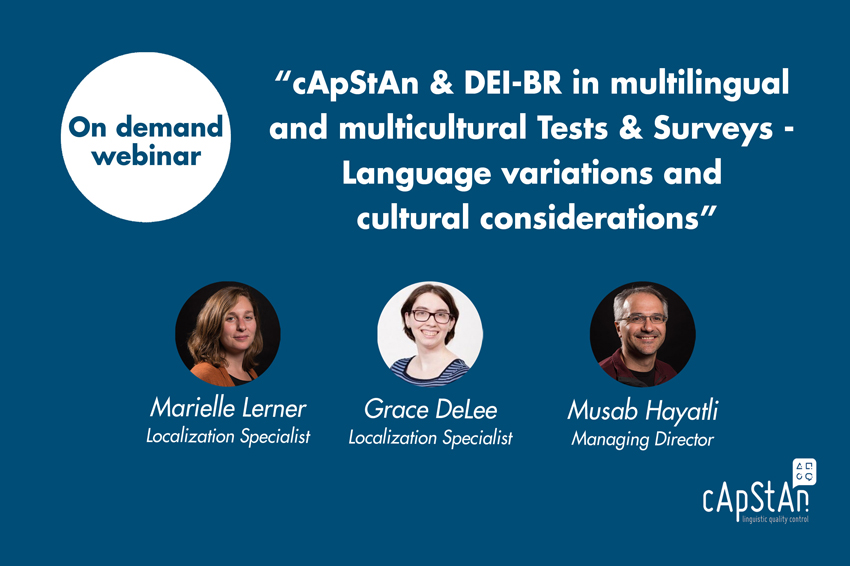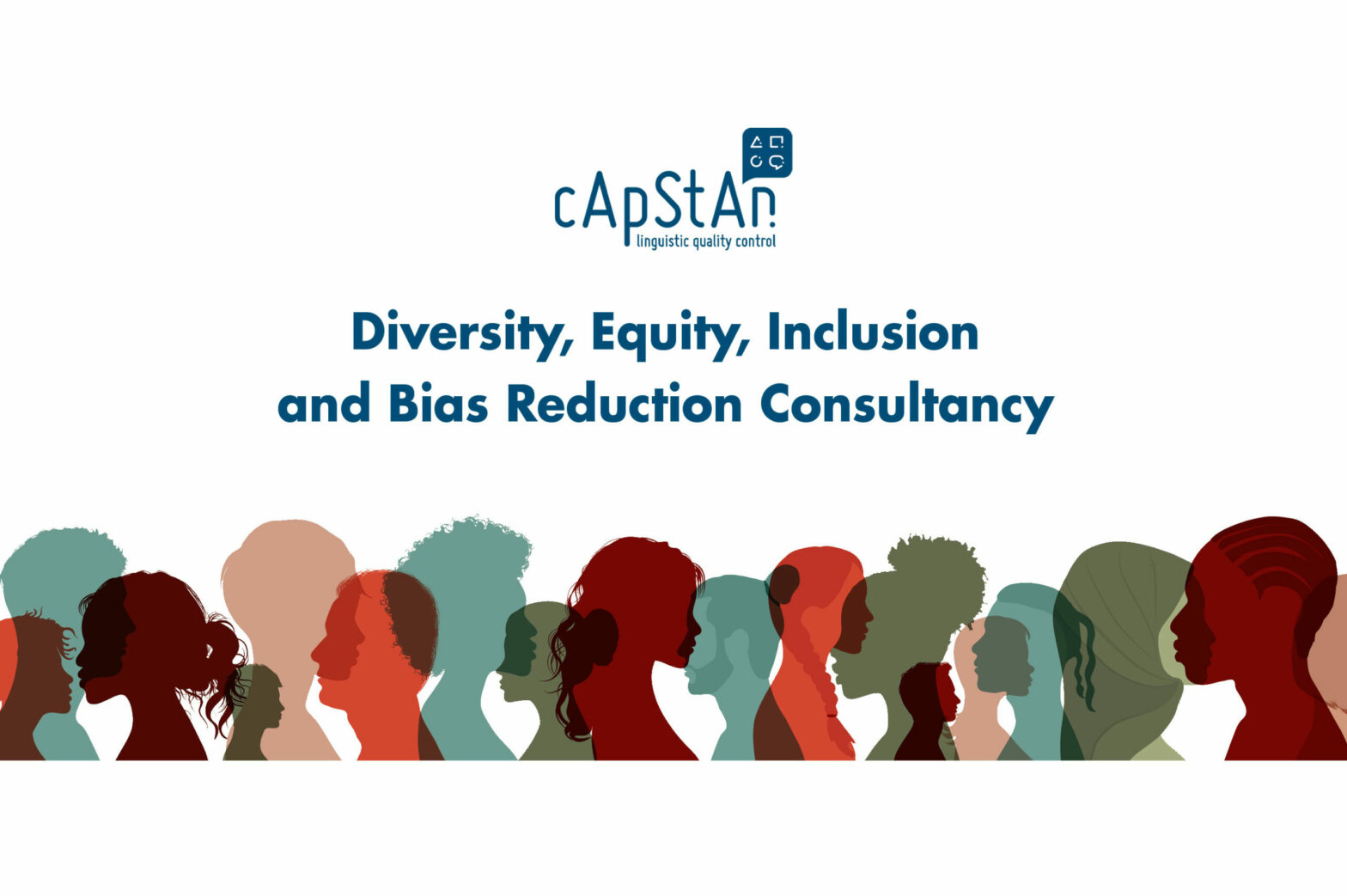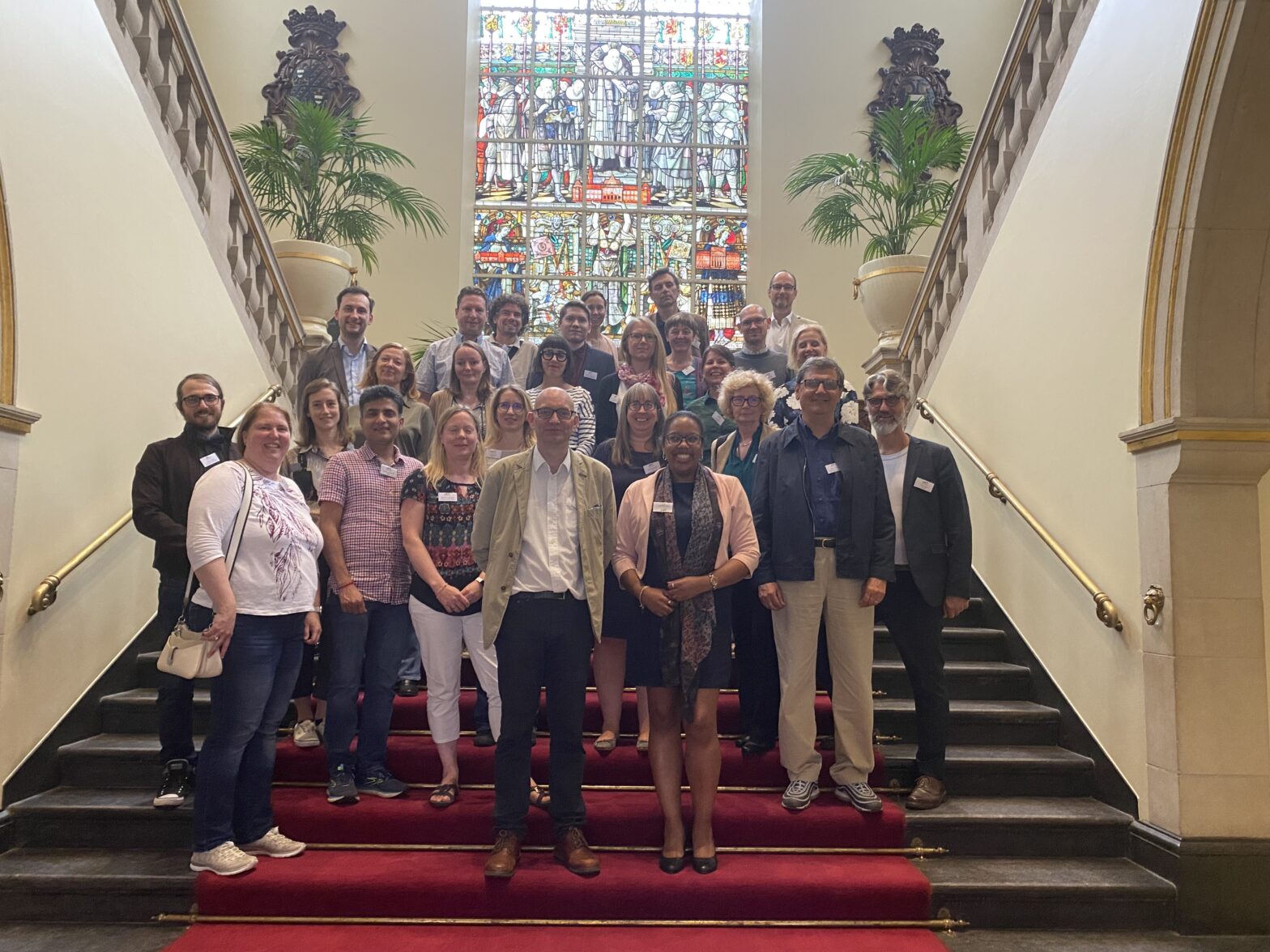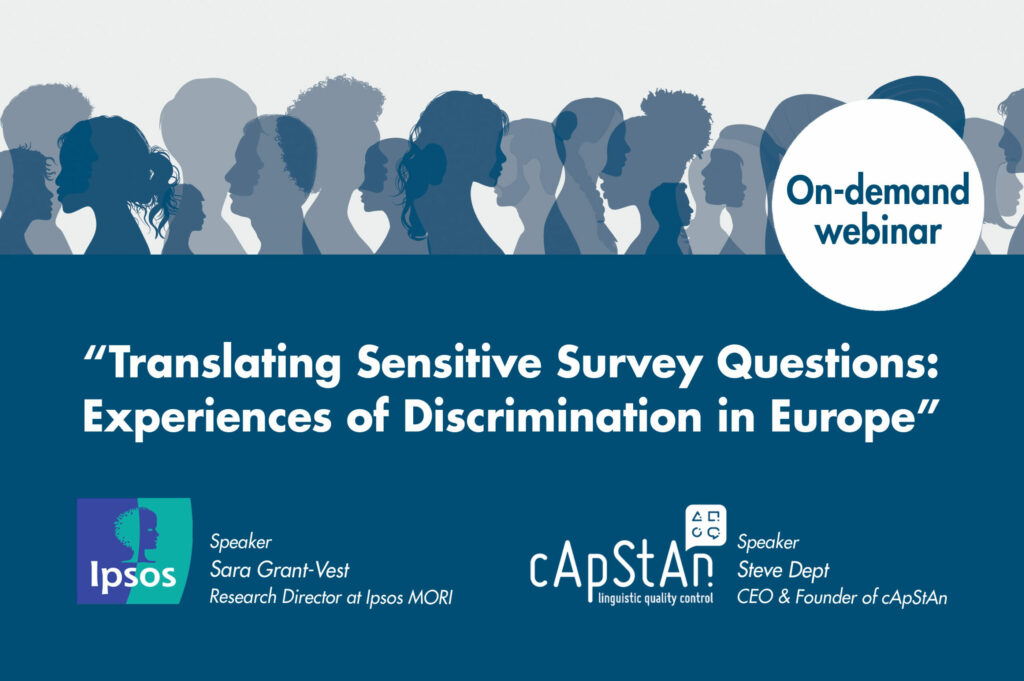Category Archives: Survey translation and localisation

On-Demand Webinar | cApStAn & DEI-BR in multilingual and multicultural Tests & Surveys – Language variations and cultural considerations
Awareness of Diversity, Equity and Inclusion in tests, assessment, polls and surveys is growing, becoming increasingly indispensable as it both ensures the fairness of tests and the reliability for any data collection instrument. It is a very positive move! We at cApStAn are not DEI-BR experts per se. We are a language company which partners …
Read More
Why involving language services providers (LSPs) in the translation platform design is important
by Roberta Lizzi – Senior project manager, external human resources director When multinational surveys and assessments go digital, content creators, principal investigators or test owners tend to rely on platforms, not only for delivery, but also for the management of the translation process. These platforms can be off-the-shelf or developed in-house. As a consequence, language …
“Why involving language services providers (LSPs) in the translation platform design is important”
Read More
Diversity, Equity, Inclusion & Bias Reduction Consultancy
Looking at standardized tests and questionnaire content through the lens of Diversity, Equity, Inclusion and Bias Reduction (DEI-BR) Standardized tests and questionnaires are used in a variety of contexts such as admission to university, certification, accreditation, or hiring. Fairness, validity and reliability are objectives that every testing organisation strives to address. The processes in place …
“Diversity, Equity, Inclusion & Bias Reduction Consultancy”
Read More
Do SMEs and Linguists mix like Water and Oil?
by Steve Dept, Founding Partner The idiom “these folks mix like water and oil” usually refer to an insuperable difficulty for certain people to blend and see eye to eye with one another. When we were asked to verify the translation of assessments for which it was obvious that linguists alone would not have the …
“Do SMEs and Linguists mix like Water and Oil?”
Read More
cApStAn’s new website has launched!
Et voilà! We are now online! After months of hard work we are delighted to announce the launch of our new website, which reflects our mission, values and brand, and showcases the best of our linguistic services and the great team behind it all. The new features are tailored to help you find the right …
“cApStAn’s new website has launched!”
Read More
Do Trained Interviewers Follow Their Script? Reports from Zedland
by Steve Dept, cApStAn CEO In multilingual surveys, numerous factors may contribute to — or compromise — data comparability across countries, across cultures and across languages. Upstream quality assurance work may include cognitive labs, piloting and a translatability assessment. A sophisticated team translation design can be used to minimize item bias due to language-driven meaning …
“Do Trained Interviewers Follow Their Script? Reports from Zedland”
Read More
How to best approach the translation and adaptation of tests and surveys for gendered languages
by Pisana Ferrari – cApStAn Ambassador to the Global Village Standardized tests and assessments are used in a variety of different contexts: admission to schools and universities, professional certifications, hiring, or collecting information about background variables, for example, and can come in more than one language. In this case, test or assessment developers will need …
“How to best approach the translation and adaptation of tests and surveys for gendered languages”
Read More
Second Project Meeting of COORDINATE (COhort cOmmunity Research and Development Infrastructure Network for Access Throughout Europe)
The leads of the 12 work packages of the COORDINATE project are meeting today in the historical Academy Building of the University of Groningen, the Netherlands, in the very room where doctoral students defend their PhD dissertations. Thirty-five researchers and field practitioners from the 19 project partner institutions and organisations, all committed to collecting data …
Read More
Translating Sensitive Survey Questions: Experiences of Discrimination in Europe
EU-MIDIS II, the EU’s 2nd Minorities and Discrimination Survey, provides an interesting case study of a close and successful collaboration between the FRA, the EU Agency for Fundamental Rights, the survey organisation Ipsos MORI, and cApStAn LQC. The aim of the EU-MIDIS cycle of surveys is to assist EU institutions and policy makers in developing …
“Translating Sensitive Survey Questions: Experiences of Discrimination in Europe”
Read More
On-Demand Webinar | Disentangling Proficiency in Programming from Proficiency in English: Codility Meets cApStAn
Codility is the #1 rated recruitment platform for developers, helping world-class companies the likes of Microsoft, Intel and American Express to assess candidate programmers via skills-based coding tests. The tests are administered in English, but often the candidates are not native English speakers. Hence the “pain point” identified by Codility: a too high level of …
Read More
How can you create culturally fair content for tests and surveys?
by Marielle Lerner – Localization Specialist Lost in adaptation If you are involved with the production of international surveys or assessments, you have likely observed the “lost in translation” phenomenon in action. On the other hand, you may have never heard the expression “lost in adaptation”, something that we at cApStAn are always thinking about …
“How can you create culturally fair content for tests and surveys?”
Read More
Adequate communication is essential to guarantee health and safety at work: this poses an additional challenge when you have a multilingual workforce
by Pisana Ferrari – Branding and Social Media Manager Foreign-born workers may face language barriers that compromise their ability to understand training materials, signage, safety and hazard alerts as well as verbal instructions, and can potentially increase their risk of on-the-job injury. Languages also have different dialects, and workforces can include people with different literacy …
Read More